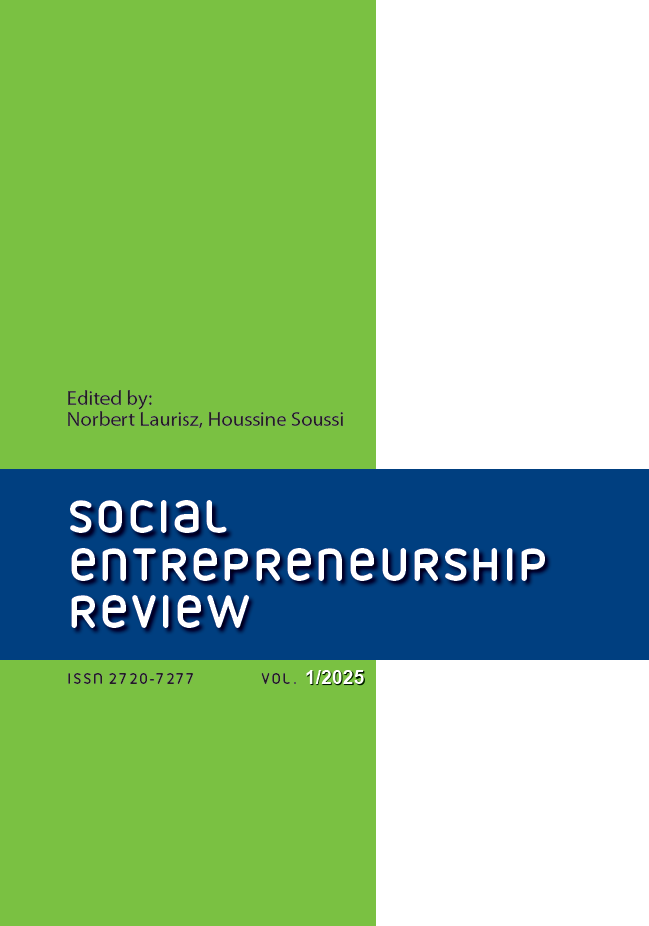Promoting gender equality through leveraging the Women, Business, and the Law index: A comparative analysis of high- and low-income countries
DOI:
https://doi.org/10.15678/SER.2025.1.06Keywords:
gender equality, Women, Business and the Law index, comparative analysis, economic participationAbstract
Background: Gender equality and the empowerment of women are imperative for inclusive and sustainable development. Despite the fact that the Women, Business, and the Law (WBL) Index provides a comprehensive framework for evaluating legal progress towards gender equality, there is a paucity of research on how key influencing factors vary across economic contexts.
Research objectives: The present study aims to examine the influence of asset accessibility, workplace conditions, mobility rights, pay equality, entrepreneurial opportunities, and safety on WBL index scores in high- and low-income countries. The present analysis aims to address the research gap concerning the differential impact of these variables in diverse economic environments.
Research design and methods: Multiple linear regression analysis was employed using data from countries classified by income level. The WBL index functioned as the dependent variable, with the influence of six predictor variables on gender equality outcomes being assessed.
Results: The findings suggest that pay equality and mobility rights have a greater impact in low-income countries, while safety, workplace conditions, and entrepreneurial opportunities play a more significant role in high-income countries. These results emphasize the necessity of adapting gender equality policies to particular economic contexts.
Conclusions: The study emphasizes the importance of context-specific approaches to the promotion of gender equality. In low-income countries, efforts should be concentrated on the improvement of legal rights related to remuneration and mobility. In high-income countries, efforts should be concentrated on enhancing workplace conditions, improving safety, and fostering women's entrepreneurship. The study also identifies common areas for improvement across both contexts to support global gender equality initiatives.
Downloads
References
Ani, F., Abu Samah, A., Damin, Z. A., Jaes, L., Isa, K., Md. Yusoff, R., Sarawati, S., & Hamzah, J. S. (2018). Participation and women’s economic empowerment: Clarifying their relationship in community based organization. International Journal of Engineering & Technology, 7(4.9), 211. https://doi:10.14419/ijet.v7i4.9.20676
Aydin, H. İ., Benghoul, M., & Balacescu, A. (2019). Women’s role in economic development: A significant impact in the EU countries? International Journal of Sustainable Economies Management, 8(1), 29–38. https://doi:10.4018/IJSEM.2019010103
Brophy, M., McAdam, M., & Clinton, E. (2023). Vying for and forgoing visibility: Female next gen leaders in family business with male successors.
Early Childhood Caries Advocacy Group, Folayan, M. O., El Tantawi, M., Vukovic, A., Schroth, R., Gaffar, B., Al-Batayneh, O. B., Amalia, R., Arheiam, A., Obiyan, M., & Daryanavard, H. (2020). Women’s economic empowerment, participation in decision-making, and exposure to violence as risk indicators for early childhood caries. BMC Oral Health, 20(1), 54. https://doi.org/10.1186/s12903-020-1045-5
IWRAW. (2004). Equality and women’s economic, social and cultural rights. A guide to implementation and monitoring under the International Covenant on Economic, Social and Cultural Rights. http://hrlibrary.umn.edu/iwraw/CESCRMANUAL.pdf
Kanji, S., & Vershinina, N. (2024). Gendered transitions to self-employment and business ownership: a linked-lives perspective. https://doi.org/10.1080/08985626.2024.2310107
Kosumi, MSc. 2017. Discrimination of women in the private sector. ILIRIA International Review, 7. https://doi.org/10.21113/iir.v7i1.301
Lechman, E., Okonowicz, A., & June, J. (2013). Are women important for economic development? Evidence on women’s participation in labor market and their contribution to economic growth in 83 world countries Working Paper Series A: Economics, Management, Statistics 13/2013. https://doi.org/10.13140/2.1.4593.6325
Munin, N. (2012). Enhancing women’s integration in labor markets – A global economic interest: The (limited) role of international economic organizations. Journal of Multidisciplinary Research, 4(1), 21–43. https://ssrn.com/abstract=2641482
Naililhaq, F. N., & Udasmoro, W. 2021. Women economic participation in Novel Tentang Kamu by Tere Liye. Leksika: Jurnal Bahasa, Sastra Dan Pengajarannya, 15(1), 27. https://doi.org/10.30595/lks.v15i1.9107
Osinubi, T., & Asongu, S. (2021). Globalization and female economic participation in MINT and BRICS countries. Journal of Economic Studies 48(6), 1177–1193. https://doi.org/10.1108/JES-08-2020-0381.
Sanchez-Riofrio, A. M., Lupton, N. C., Camino-Mogro, S., & Acosta-Ávila, Á. (2023). Gender-based characteristics of micro, small and medium-sized enterprises in an emerging country: Is this a man’s world? Journal of Entrepreneurship in Emerging Economies, 15(3), 652–673. https://doi.org/10.1108/JEEE-07-2021-0273
Sepashvili, E. (2019). Gender dimension of economic decision-making: Women on top management. Economia Aziendale Online, 10(2), 385–399. https://doi.org/10.13132/2038-5498/10.2.1954.
Sever, C. (2022). Gendered laws and labor force participation. https://ssrn.com/abstract=4077808
Vravec, J., & Bačík, R. (2012). Discrimination of women in the labour market of SR and models of discrimination. Polish Journal of Management Studies, 5, 266–278. https://pjms.zim.pcz.pl/article/130712/en
World Bank. (2023). Women, business and the law 2023. The World Bank. https://doi.org/10.1596/978-1-4648-1960-8
Downloads
Published
Issue
Section
License
Copyright (c) 2025 Social Entrepreneurship Review

This work is licensed under a Creative Commons Attribution 4.0 International License.






